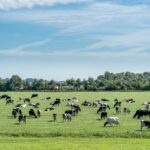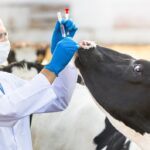Droughts are a recurring challenge for farmers in South Africa, affecting crop yields, livestock health, and overall agricultural productivity. Developing drought-resistant farming practices is crucial for ensuring food security and sustainable agriculture in the face of changing climatic conditions. Here are ten strategies that South African farmers can adopt to build resilience against drought:
- Water Harvesting and Storage: Invest in rainwater harvesting systems, such as storage tanks and ponds, to capture and store rainwater during wet periods for use during dry spells. This helps supplement irrigation and reduces dependency on scarce water resources.
- Drip Irrigation and Water Efficiency: Implement drip irrigation systems that deliver water directly to the roots of plants, minimizing evaporation and water waste. Use moisture sensors and scheduling techniques to optimize water use based on plant needs.
- Mulching: Apply mulch such as organic materials or plastic covers around plants to retain soil moisture, regulate soil temperature, and suppress weed growth. Mulching reduces water evaporation from the soil surface and improves soil health over time.
- Soil Health Management: Enhance soil organic matter through composting, cover cropping, and reduced tillage. Healthy soils with high organic content retain more water and support better root development, making plants more resilient to drought stress.
- Crop Selection and Rotation: Choose drought-tolerant crop varieties suited to local climate conditions. Rotate crops to break pest cycles and improve soil structure, which enhances water infiltration and reduces runoff.
- Agroforestry and Windbreaks: Integrate trees and shrubs into agricultural landscapes to create windbreaks that reduce water loss through evapotranspiration. Agroforestry systems also improve soil fertility and provide additional income sources from tree products.
- Livestock Management: Implement sustainable grazing practices such as rotational grazing to prevent overgrazing and maintain ground cover. Preserve natural vegetation and water sources for livestock to minimize stress during drought periods.
- Climate Information and Early Warning Systems: Utilize weather forecasts and climate data to anticipate drought conditions and plan farming activities accordingly. Early warning systems can help farmers prepare for potential water shortages and mitigate risks.
- Technology and Innovation: Embrace agricultural innovations such as drought-resistant seeds, precision farming technologies, and remote sensing tools to monitor crop health and water use efficiency. Research and adopt new practices that enhance resilience to drought.
- Community and Stakeholder Collaboration: Engage with local communities, agricultural organizations, and government agencies to share knowledge, resources, and support during drought events. Collective efforts can lead to better drought preparedness and response strategies.
Developing drought-resistant farming practices in South Africa requires a holistic approach that combines water conservation, soil management, crop diversification, and community collaboration. By implementing these strategies, farmers can mitigate the impacts of drought, improve agricultural sustainability, and ensure resilient food production for future generations. Investing in drought resilience is crucial for safeguarding South Africa’s agricultural sector and rural livelihoods amidst climate variability.
Join 'Farmers Mag' WhatsApp Channel
Get the latest Farming news and tips delivered straight to your WhatsApp
CLICK HERE TO JOIN






